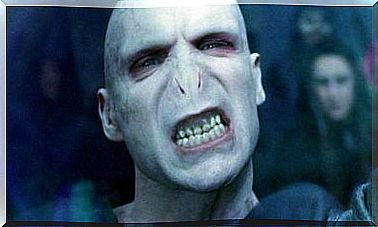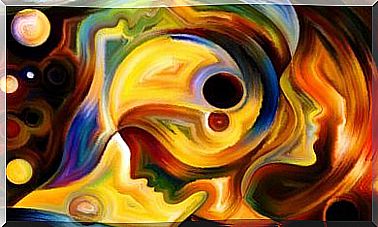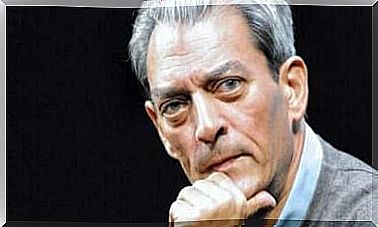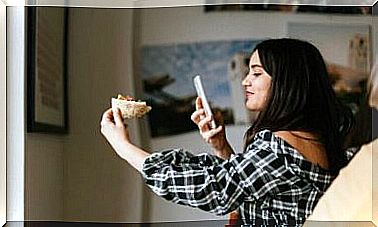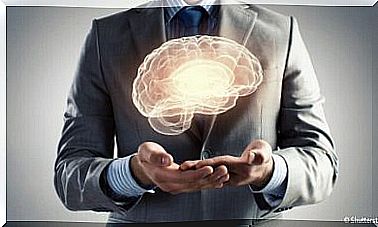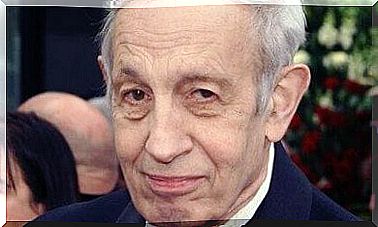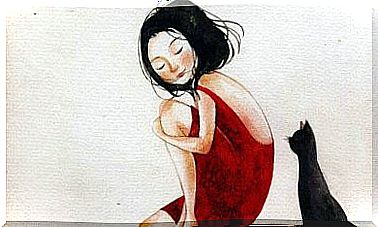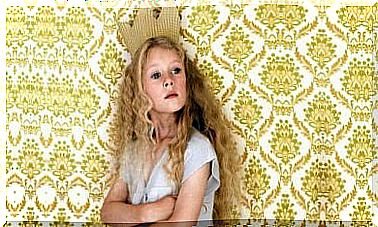Piaget And His Theory Of Learning
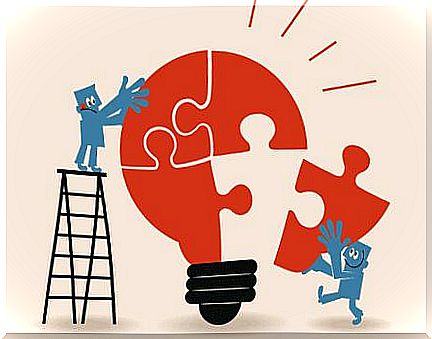
Jean Piaget is one of those writers with golden words in psychology. His theory of cognitive learning in childhood made him the father of modern pedagogy. He discovered that the principles of our logic begin to settle before the acquisition of language, through sensory and motor activity in interaction with the environment, especially in the socio-cultural environment.
Psychic development, which begins at birth and ends in adulthood, is comparable to biological growth: it essentially consists of a walk towards equilibrium. In the same way that the body evolves to a relatively stable level, characterized by the end of growth and the maturity of the organs, mental life can be seen as an evolution towards a form of final equilibrium, represented by the adult person. .
Its influence in the psychology of learning stems from the consideration it brings to mental development, through language, play and comprehension. For this, the first task of the educator is to generate interest, as an instrument with which to be able to understand and act with the pupil. This research, carried out for almost 40 years, does not only try to get to know the child better and to improve pedagogical and educational methods, but also the human in general.
The main idea of Piaget is that it is essential to understand the formation of the mental mechanisms of the child to capture its nature and its functioning in adulthood. His educational theory was based on psychology, logic and biology. This is how his definition of the action of thinking was shaped, where we start from a few pillars conditioned by genetics and which is then built through socio-cultural stimuli.
This is how the information the person receives is configured. This information is always actively learned even though the process seems subconscious and passive.
“The main focus of education in schools should be creating men and women who are able to do new things, not just repeat what other generations have done; men and women who are creative, inventive and discoverers, who can be critical, verify and not accept everything that is offered to them. ”
-Jean Piaget-
Learn to adapt
According to Piaget’s Theory of Learning, learning is a process that only makes sense when faced with situations of change. This is why learning is partly knowing how to adapt to these new things. This theory explains the dynamics of adaptation via the processes of assimilation and accommodation.
Assimilation refers to the way in which an organism is confronted with a stimulation of the entourage in terms of current organization, while accommodation implies a modification of the current organization in response to the demands of the environment. Through assimilation and accommodation, we cognitively restructure our learning throughout development (cognitive restructuring).
Accommodation or adjustment is the process through which the subject modifies his schemas, his cognitive structures, in order to be able to incorporate new objects into this cognitive structure. This can be achieved by creating a new pattern or modifying an already existing pattern, so that the new stimulation and its natural and associated behavior can fit in as a part of it. .
Assimilation and accommodation are two invariable processes throughout cognitive development. For Piaget, assimilation and accommodation interact with each other in a process of equilibrium. This can be seen as a regulatory process, at a higher level, which directs the relationship between assimilation and accommodation.
John Lennon used to say that life is what happens to us while we have other plans, and it would seem that is often true. Human beings need a certain security to live in peace, and therefore we create the illusion of permanence. Everything would be static and nothing would change, but that is not true. Everything is constantly changing, but we are not aware of it, until the change becomes so evident that we have no choice but to face it.
“Intelligence is what you use when you don’t know what to do.”
-Jean Piaget-
We socialize through language
During early childhood, we witness a transformation of intelligence. It is simply sensorio-motor or practical and is transformed into a thought proper, under the double influence of language and socialization.
Language, first of all, allows the subject to explain his actions, which facilitates the reconstruction of the past, and gives rise to the evocation, by their absence, of the objects towards which his past behaviors are directed. It also allows us to anticipate future actions, not yet executed, to the point of sometimes replacing them only with words, without ever completing them. It is the starting point of thought as a cognitive process and of Piaget’s own thought.
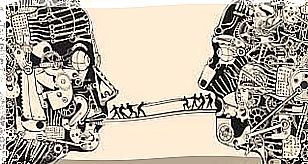
Language indeed unites concepts and notions which belong to all and which reinforce individual thought via a large system of collective thought. It is in this ultimate thought that the child finds himself virtually immersed when he can master the spoken word.
Thus, it is the same thing that arises with thought and with behavior considered as a whole. Instead of totally adapting to the new realities that he discovers and builds little by little, the subject must begin with a laborious incorporation of data, in himself and in his activity. And this egocentric assimilation characterizes the beginnings of the child’s thought as well as those of his socialization.
“Good pedagogy must confront the child with situations in which he experiments in the broadest sense of the term. Language helps us anticipate these situations. ”
-Jean Piaget-
Behavior as a driver of evolution
In 1976, Piaget published a book entitled Behavior, engine of evolution. In it, he exposes a perspective on the function of behavior as a determining factor of evolutionary change and not as a simple product of the same, which would be the result of mechanisms independent of the action of organisms.
Piaget refutes in particular the neo-Darwinist postures, because he considers that biological evolution does not occur only by natural selection, understood exclusively as the product of random genetic variability and of differential rates of survival and reproduction as a function of adaptation benefits verified a posteriori.
From this perspective, it would be a process independent of the behavior of the organism and which could only be explained by the consequences, favorable or unfavorable, of the phenotypic changes caused by the absolutely hazardous mutations and their transmission throughout. along generations.
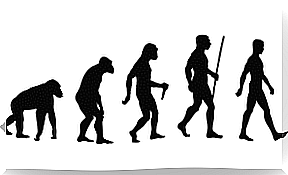
Behavior, for Piaget, is a manifestation of the overall dynamics of the organism as an open system in constant interaction with the environment. It would also be a factor of evolutionary change, and to try to explain the mechanisms by which behavior would carry out this function, he resorts to the concept of epigenesis and to his own explanatory model of adaptation in terms of assimilation and adaptation. accommodation. By epigenesis, it understands the reciprocal interaction between genotype and environment for the construction of the phenotype according to the experience.
Piaget maintains that all behavior involves the necessary intervention of internal factors. He also points out that all animal behavior, including human behavior, assumes accommodation to environmental conditions and cognitive assimilation, understood as integration into a prior behavioral structure.
“When you teach a child something, you forever take away the opportunity for them to learn it on their own.”
-Jean Piaget-
Piaget’s contributions to current education
Piaget’s contributions to education are considered extremely important for educational theory. Piaget is the founder of genetic psychology, the one that significantly affected the theory and educational practice that has generated around it, despite the fact that it has varied over time giving rise to different formulations. You should know that a lot of work has been developed based on contributions from Piaget.
Jean Piaget’s work consists of his discoveries of human thought from a biological, psychological and logical perspective. It is necessary to know that the concept of “Genetic Psychology” is not applied in a totally biological or physiological context, as it does not refer to or be based on genes. Rather is labeled as “genetics” all his work developed around genetics, the origin or beginning of human thought.
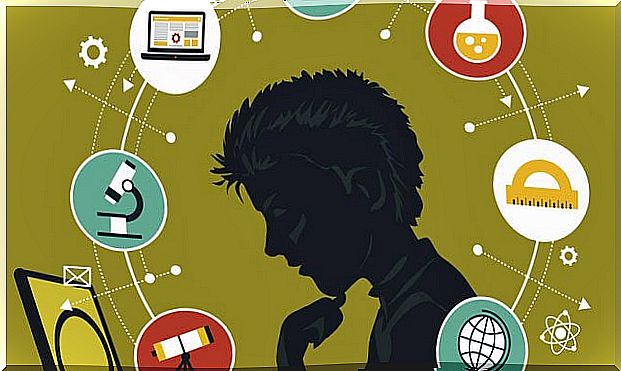
One of Piaget’s major contributions to current education has been to lay the foundations for the first years of children’s education where the objective is cognitive development, ultimately the first learning. For this, it is essential and complementary that the family has learned and stimulated the child, by teaching him certain rules and standards that will allow his assimilation in a school environment.
Another contribution of Piaget, which we can also see in certain schools, is that the theory that we give in a class is not sufficient to say that the subject has assimilated and learned. Thus, learning involves more pedagogical methods like the application of knowledge, experimentation and demonstration.
The main purpose of education is to create people who are able to innovate, not just to repeat what other generations have done. People who are creative, inventors and discoverers. The second objective of education is to form minds who are critical, who can verify and not accept whatever is transmitted to them as being valid or true.
Going through Piaget’s theory allows any teacher to know how the minds of their students will evolve. The central idea of his theory is that knowledge is not a copy of reality, but the product of a person’s inter-relationship with those around him. Thus, it would always be individual, particular and unique.
“The second goal of education is to form minds that can be criticized, who can verify and not accept everything that is offered to them. The great danger today are the slogans, the collective opinions, the trends already made of thought. We have to be able to stand up against each other individually, to criticize, to distinguish between what is good and what is not. ”
-Jean Piaget-
- Language and Thought in Children , Paris, Delachaux and Niestlé, 1923.
- The Moral Judgment of the Child , Library Contemporary Philosophy, Paris, PUF, ( 1 st edition: PUF, 1932)
- The construction of reality in children , Paris, Delachaux and Niestlé, 1937
- Psychology and pedagogy , Gonthiers Denoël, 1969, coll. Mediations, Paris.
- Six Studies in Psychology , Folio Essays, 1964.
- The child psychology , Jean Piaget and Bärbel Inhelder, Quadriga, PUF, 2004 ( 1 st edition: 1966 What do I know No, PUF?
Also read:


